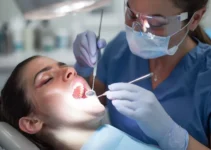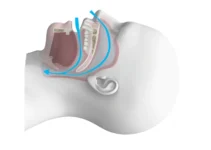Experiencing a crackling sound while breathing when lying down can be unsettling and might point to various underlying health conditions. Often, this symptom is associated with respiratory issues such as bronchitis, pneumonia, or pulmonary edema, where fluid accumulates in the lungs. It may also be a sign of airway inflammation caused by allergies or infections. In this article, we explore the potential causes of these sounds, offering insights into when you should seek medical consultation and how these conditions are typically addressed.
Common Causes of Crackling Sound When Breathing Lying Down
Experiencing a crackling sound when breathing while lying down can be concerning. This phenomenon, medically known as rales or crackles, may indicate a variety of underlying health issues. Understanding the common causes can help in seeking timely medical advice and appropriate treatments. Let’s delve into some of the typical reasons why this might happen.
Several conditions can lead to the presence of crackles when breathing. These include fluid accumulation in the lungs, respiratory infections, and chronic conditions such as asthma. Each cause has distinct characteristics and implications for health, which we will explore in detail.
Fluid Accumulation in the Lungs
One of the most common reasons for hearing a crackling sound when breathing is the accumulation of fluid in the lungs. This condition, often referred to as pulmonary edema, can occur due to several factors such as heart failure, pneumonia, or acute respiratory distress syndrome (ARDS). In heart failure, the heart is unable to pump blood efficiently, leading to a buildup of fluid in the lungs. This fluid creates the characteristic crackling sound as it interrupts the normal flow of air during breathing. Pulmonary edema requires immediate medical attention, as it can be life-threatening if left untreated.
Pneumonia, an infection that inflames the air sacs in one or both lungs, can also cause fluid accumulation. The presence of fluid and inflammatory cells in the alveoli can produce crackles, particularly noticeable when a person is lying down.
Respiratory Infections
Respiratory infections, such as bronchitis or pneumonia, are another common cause of crackling sounds in the lungs. These infections lead to the inflammation and filling of the airways and alveoli with mucus and other debris, disrupting normal airflow and producing the crackling noise.
When the bronchi, the large passageways to the lungs, become infected and inflamed, the condition is known as bronchitis. This inflammation disrupts normal airflow, causing wheezing and crackles, especially during exhalation or when lying down.
Pneumonia, which involves the deeper parts of the lungs, can cause more pronounced crackling sounds as air moves through the fluid-filled alveoli. The severity of the infection typically correlates with the intensity of the crackles heard during breathing.
Asthma
Asthma is a chronic condition characterized by inflammation and narrowing of the airways. During an asthma attack, these airways become constricted and filled with mucus, making it difficult to breathe and often producing a range of abnormal lung sounds, including crackles.
Individuals with asthma may notice a crackling sound, particularly when lying down, due to changes in air pressure and airflow within the lungs. The inflammation and mucus plugs associated with asthma exacerbate these sounds, indicating potential bronchoconstriction or airway obstruction.
Managing asthma typically involves the use of inhalers and medications to reduce inflammation and open the airways. Recognizing the signs of an asthma flare-up, such as increased crackling sounds when breathing, is crucial for effective management and to prevent severe attacks.
If you’re interested in learning more about related respiratory conditions and their management, be sure to check out our other articles on various lung-related health topics.
Diagnostic Methods for Crackling Sound When Lying Down
The presence of a crackling sound when lying down can be an indication of various underlying dental and maxillofacial issues. To accurately diagnose the source of the noise, a systematic approach is essential. This often involves a combination of clinical evaluation and advanced imaging techniques. Understanding these methods can help both patients and healthcare providers achieve a more accurate diagnosis and effective treatment plan.
Typically, the diagnostic process begins with a thorough physical examination, followed by imaging techniques if necessary. Each step provides critical information that contributes to a comprehensive understanding of the patient’s condition. Early diagnosis and intervention are key to preventing potential complications.
Physical Examination
A physical examination plays a pivotal role in the initial assessment of a crackling sound when lying down. The examination usually begins with a detailed medical and dental history to identify any previous conditions or treatments that could be relevant. Palpation and auscultation are commonly used to detect anomalies in the jaw and surrounding areas.
During the physical examination, the dentist may:
- Inspect the jaw for any irregularities or swelling.
- Evaluate the movement and alignment of the jaw.
- Listen for any sounds produced during jaw movement.
- Assess the function of the temporomandibular joint (TMJ).
Additionally, the dentist may perform specific tests to gauge the severity and nature of the condition. These tests can include measurement of jaw opening and closing, as well as the assessment of muscle tenderness. The results from these tests provide crucial data that inform subsequent diagnostic steps.
Imaging Techniques
When a physical examination alone is insufficient to pinpoint the cause of the crackling sound, imaging techniques offer more detailed insights. Commonly used imaging modalities include X-rays, Magnetic Resonance Imaging (MRI), and Cone Beam Computed Tomography (CBCT). Each of these techniques has its own set of advantages and limitations.
X-rays are often the first line of imaging used to detect structural problems in the teeth and jaw. They provide quick and accessible insights but may not offer detailed views of soft tissues.
For more comprehensive imaging, an MRI can be employed. This technique is particularly useful for examining soft tissue abnormalities, including issues related to the TMJ. An MRI can reveal inflammation, disk displacement, and other conditions that X-rays cannot detect.
Another advanced imaging technique is CBCT, which offers three-dimensional views of the jaw and teeth. CBCT is highly effective for evaluating complex structural issues and providing detailed anatomical information. This can be particularly helpful in planning surgical interventions or other treatments.
The combination of physical examination and imaging techniques allows for a well-rounded diagnostic process. Understanding these methods can empower patients to seek timely and appropriate care, ultimately improving their quality of life. For further information on related topics, consider exploring our other articles on dental health and maxillofacial conditions.
Treatment Options and Home Remedies
When dealing with dental issues, it is essential to understand the various treatment options and home remedies available. Knowing these options empowers patients to make informed decisions about their oral health. This section will explore both medical treatments provided by dental professionals and home remedies that can help alleviate symptoms or support ongoing treatment.
Making the right choice between professional medical treatments and home remedies often depends on the severity and nature of the dental issue. Professional consults are always advised when in doubt, as they provide tailored solutions based on accurate diagnoses. Let’s delve into the specifics of these treatment options.
Medical Treatments
Medical treatments for dental issues range from basic procedures to advanced surgical interventions. These treatments are generally faster and more effective compared to home remedies but may involve higher costs and recovery times.
Here are some common medical treatments:
- Fillings and Crowns: Used to restore decayed or damaged teeth, fillings and crowns are some of the most common dental procedures. Studies show a high success rate, especially when performed with modern materials.
- Root Canal Therapy: This procedure involves removing infected or damaged pulp from inside the tooth. According to the American Association of Endodontists, it has a success rate of over 90%.
- Dental Implants: For tooth replacement, dental implants offer a long-term solution. Clinical research indicates a success rate of approximately 95% over ten years.
Advanced surgical procedures may also be recommended for severe cases:
- Bone Grafting: Used when there is insufficient bone to support dental implants. Studies have shown that bone grafting can significantly improve the success rate of dental implants.
- Orthodontics: To correct misaligned teeth, braces or aligners can be used. Advanced imaging techniques have made orthodontic treatments more efficient and less invasive.
Home Remedies
While medical treatments are crucial for serious dental issues, home remedies can provide short-term relief and support overall oral health. These remedies are generally more accessible and cost-effective but should not replace professional treatments for severe conditions.
Common home remedies include:
- Saltwater Rinses: Effective for reducing inflammation and killing bacteria. Scientific studies have shown that saltwater can help in temporary relief of symptoms.
- Hydrogen Peroxide Rinses: Known for its antibacterial properties, hydrogen peroxide can help in reducing bacterial count in the mouth.
- Clove Oil: Traditionally used for its analgesic properties, clove oil can help alleviate tooth pain. Research suggests its active ingredient, eugenol, is effective in numbing localized pain.
- Cold Compress: Applying a cold compress can help reduce swelling and alleviate pain in cases of dental trauma or gum inflammation.
It’s essential to remember that while home remedies can provide relief, they are not substitutes for professional dental care. Always consult a dental professional for persistent or severe symptoms.
Understanding both medical treatments and home remedies equips you with the knowledge to take proactive steps in maintaining your dental health. Stay informed and consider reading our other articles to deepen your understanding of effective dental care practices.
FAQs About Crackling Sounds While Breathing When Lying Down
If you’re hearing a crackling sound while breathing as you lie down, you might find yourself concerned and full of questions. Get answers to common inquiries below.
What causes a crackling sound when I breathe while lying down?
Crackling sounds when breathing lying down, often described as rales, are usually caused by fluid accumulation or congestion in the small airways of the lungs. This can result from various conditions including pneumonia, chronic obstructive pulmonary disease (COPD), heart failure, or pulmonary edema. Positional changes, such as lying down, can exacerbate these sounds due to shifts in body fluids affecting lung dynamics.
Should I see a doctor for crackling sounds when breathing lying down?
Yes, it’s wise to consult a healthcare provider if you notice unusual respiratory sounds, like crackling, that persist or are accompanied by other symptoms such as shortness of breath, coughing, or chest discomfort. Such sounds can indicate underlying health issues that might require medical treatment or management. Your doctor can perform appropriate diagnostic tests to determine the cause and recommend the best course of treatment.

My name is Salman Kapa, a 73-year-old expert in bone regeneration and dental implantology. With decades of experience in the field, I am dedicated to advancing our understanding of oral health and hygiene. Through my research and writing, I aim to contribute to the development of innovative solutions in dental care.




